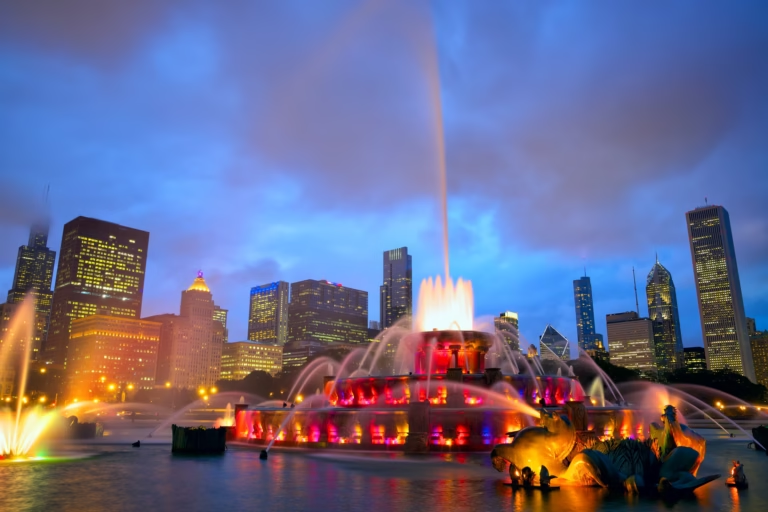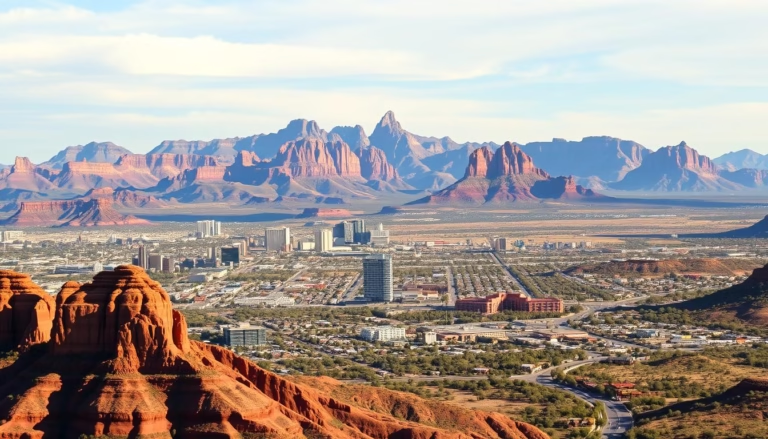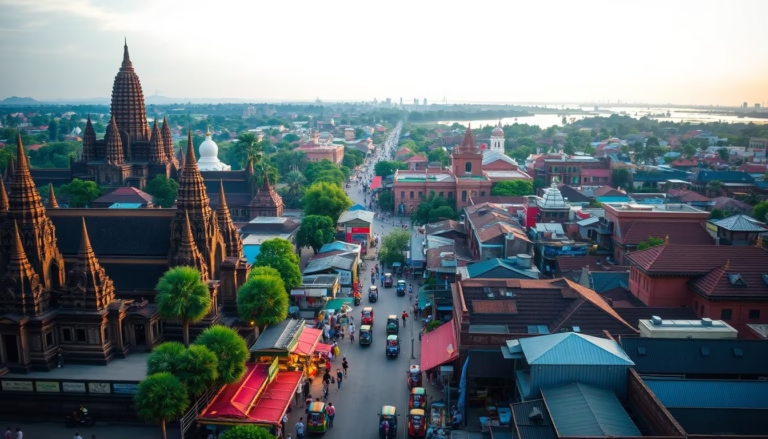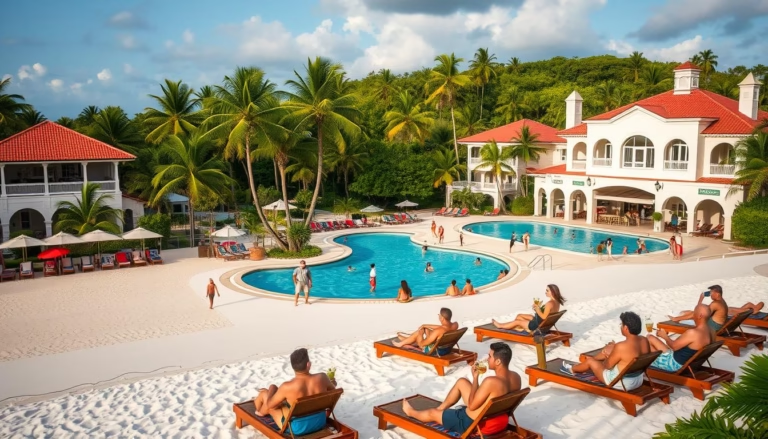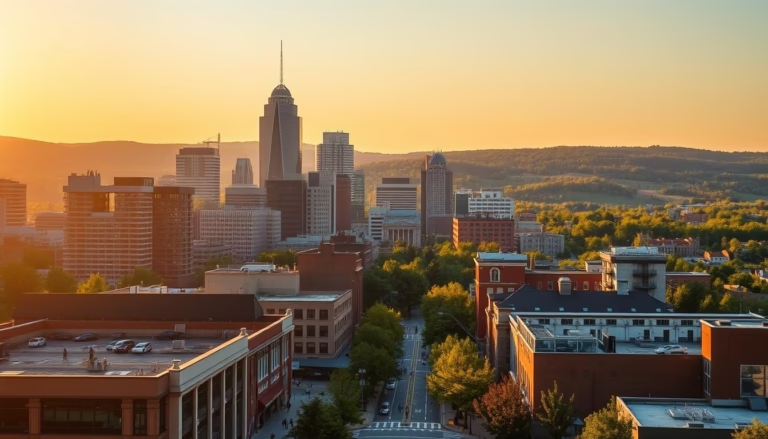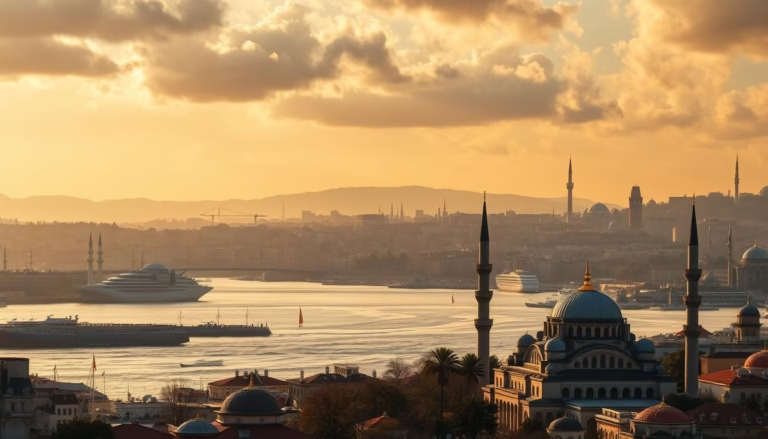Best Cities to Visit in Ecuador: A Travel Guide
Did you know Ecuador contains two of the first UNESCO World Heritage Cities ever designated? This compact nation packs more cultural diversity into its borders than countries ten times its size, with urban hubs ranging from cloud-kissed colonial gems to tropical coastal hubs.
Quito’s cobblestone streets whisper stories of Spanish conquests, while Cuenca’s blue-domed churches glow against Andean peaks. Coastal Guayaquil buzzes with modern energy, and Baños thrills adventurers with waterfall hikes and thermal springs. Each destination reveals unique layers of indigenous traditions blended with European influences.
What makes these urban centers extraordinary isn’t just their history – it’s how they harmonize with nature. Imagine sipping chocolate-rich canelazo in a plaza framed by volcanoes or spotting hummingbirds between skyscrapers. This guide unlocks practical insights for navigating these contrasting yet complementary destinations.
Key Takeaways
- Ecuador hosts UNESCO-recognized urban centers merging colonial history with living traditions
- Geographical variety creates distinct city personalities from highlands to coastline
- Local cuisine and crafts offer authentic cultural immersion opportunities
- Compact travel distances enable multi-city exploration within limited timeframes
- Modern infrastructure supports comfortable navigation between historic sites
Introduction to Ecuador’s Vibrant Cities
Step into urban spaces where cobblestones meet contemporary art galleries, and markets overflow with centuries-old craftsmanship. These living museums preserve stories spanning ancient empires, colonial conquests, and modern Latin American creativity.
Where Past Meets Present
Indigenous communities like the Cañari shaped Ecuador’s identity long before Spanish conquistadors arrived. Their legacy lives in:
- Pre-Incan pyramids at Cochasquí
- Traditional Kichwa festivals
- Handwoven textiles sold in Otavalo
Colonial architecture adds another layer, with Quito’s 16th-century monasteries earning UNESCO status. Yet these cities never feel frozen in time – mural-covered alleys in Cuenca showcase thriving street art scenes.
More Than a Pit Stop
What makes these destinations essential? Diversity within reach. Within three days, you can:
- Explore Quito’s Baroque churches
- Relax in Baños’ thermal pools
- Spot exotic birds in Mindo’s cloud forests
Local guides proudly share ancestral knowledge through chocolate tastings or demonstrations of Panama hat weaving. This blend of authentic culture and easy navigation creates trips that feel both adventurous and effortless.
Quito – The Vibrant Capital and UNESCO World Heritage Site
Perched 9,350 feet above sea level, Quito blends high-altitude energy with UNESCO World Heritage grandeur. Its Old Town district, La Ciudad Vieja, dazzles visitors with golden-age architecture and living traditions preserved across 320 acres of protected landmarks.

Exploring La Ciudad Vieja and Historic Plazas
Wander narrow cobblestone streets framed by pastel-colored buildings and ornate churches. Plaza de la Independencia anchors the historic center, where locals gather beneath the Metropolitan Cathedral’s watchful spires. Don’t miss the Presidential Palace’s scarlet-uniformed guards – their midday changing ceremony adds modern flair to colonial surroundings.
Three blocks north, San Francisco Plaza reveals Quito’s spiritual roots. The 16th-century monastery here houses gilded altars that shimmer like Andean sunsets. For panoramic views, climb to the Virgen del Panecillo viewpoint where the city unfolds like a living map.
Basilica del Voto Nacional and Cultural Museums
The neo-Gothic Basilica del Voto Nacional reimagines European design with Ecuadorian soul. Spot armadillos and iguanas carved into its stone façade – a playful twist on traditional gargoyles. Adventurous visitors can scale its towers for sweeping vistas of the city cradled by volcanoes.
Dive deeper into local heritage at Museo del Carmen Alto. This converted convent displays intricate religious art and artifacts revealing how Spanish and indigenous cultures intertwined. Nearby, Museo de la Ciudad uses interactive exhibits to showcase Quito’s evolution from ancient marketplace to modern capital.
Guayaquil – Coastal Energy and Cultural Hub
Where the Guayas River kisses the Pacific, Ecuador’s largest urban center buzzes with maritime spirit. This port city blends sleek business towers with rainbow-hued historic districts, creating a rhythm that pulses to the beat of ocean trade and tropical breezes.
Strolling the Malecón 2000 Waterfront
Feel the coast come alive along this 1.5-mile riverside walkway. Lush gardens frame interactive museums like the Museo Antropológico, while rotating art installations add modern flair. Families gather at dusk to watch sailboats glide past as street performers animate the plaza.
Discovering Las Peñas and Parque Seminario
Wander Las Peñas’ cobblestone streets lined with restored 19th-century houses. Climb the 444-step staircase to Cerro Santa Ana’s lighthouse for Instagram-worthy cityscapes. Back at ground level, Parque Seminario’s sunbathing iguanas prove wild life thrives even in urban hearts.
Don’t miss the cathedral’s stained-glass windows glowing like jewel boxes at noon. For sunset, grab a encebollado fish stew from a riverside vendor – the perfect fuel before catching a Galápagos-bound cruise.
Cuenca – Colonial Charm and Architectural Elegance
Nestled in the Andean highlands, this cultural gem wraps visitors in a living tapestry of Spanish colonial heritage. Recognized as a UNESCO World Heritage Site, Cuenca’s historic center feels like stepping into an open-air museum where every corner whispers stories of the past.
Catedral Nueva and the Iconic Blue Domes
The New Cathedral’s cobalt-tiled domes pierce the sky like celestial brushstrokes. Inside, sunlight filters through stained glass, illuminating hand-carved wooden altars adorned with gold leaf. Don’t miss the crypt’s marble floors – cool beneath your feet as you explore this masterpiece of sacred architecture.
Plaza de las Flores and Local Artisan Flair
Morning light transforms this square into a fragrant rainbow. Vendors arrange orchids and roses beneath wrought-iron balconies while the scent of freshly ground coffee wafts from nearby cafés. For deeper cultural immersion, the detailed travel guide reveals hidden workshops where artisans shape Panama hats using techniques unchanged for generations.
| Attraction | Unique Feature | Best Time to Visit |
|---|---|---|
| Catedral Nueva | 360° views from dome walkways | Weekday mornings |
| Plaza de las Flores | Fresh flower market | 7-10 AM daily |
| Museo del Sombrero | Live hat-weaving demonstrations | Afternoon tours |
Evenings here unfold slowly, perfect for sipping canelazo while watching shadows lengthen across terracotta rooftops. The city’s charm lies in these quiet moments – where history feels present, not preserved.
Baños – Gateway to Adventures and Natural Wonders
Where mist-clad mountains meet steaming thermal pools, this vibrant town thrums with geothermal energy. Nestled beneath the smoldering Tungurahua volcano, Baños serves as both relaxation hub and launchpad for Amazonian expeditions.
Mesmerizing Waterfalls and Rejuvenating Hot Springs
Thunderous cascades define the landscape here. Pailón del Diablo roars through a mossy canyon, its power felt through mist-soaked hiking trails. For gentler beauty, El Manto de la Novia spills like a bridal veil over volcanic cliffs.
After waterfall chasing, sink into natural thermal baths heated by underground magma. Locals swear by these mineral-rich pools for soothing muscles and sparking conversations under starry skies.
Thrilling Adventures and the Swing at the End of the World
Adrenaline flows faster than the Pastaza River here. Zip-line over emerald gorges or rappel down rushing waterfalls. White-water rafting trips turn novices into river warriors in minutes.
The iconic swing at La Casa del Árbol takes courage to new heights. Push off from a cliffside platform, soaring above cloud forests with the volcano as your dramatic backdrop. It’s pure nature-fueled exhilaration.
| Experience | Highlight | Best For |
|---|---|---|
| Thermal Baths | Magma-heated mineral pools | Evening relaxation |
| Waterfall Routes | 7 cascades along Río Verde | Morning hikes |
| Zip-lining | 600m cable over canyon | Afternoon thrills |
| La Casa del Árbol | Cliffside swing at 2,600m | Sunrise photos |
Between adventures, stroll past shops selling melcocha candy pulled fresh daily. The town’s infectious energy makes every return from the wild feel like coming home.
Cotopaxi Volcano and National Park Experience
Rising like a snow-crowned sentinel, Cotopaxi dominates Ecuador’s highland landscapes with its near-perfect conical shape. This active giant isn’t just a pretty peak – its glacier-clad slopes offer some of South America’s most accessible high-altitude adventures.
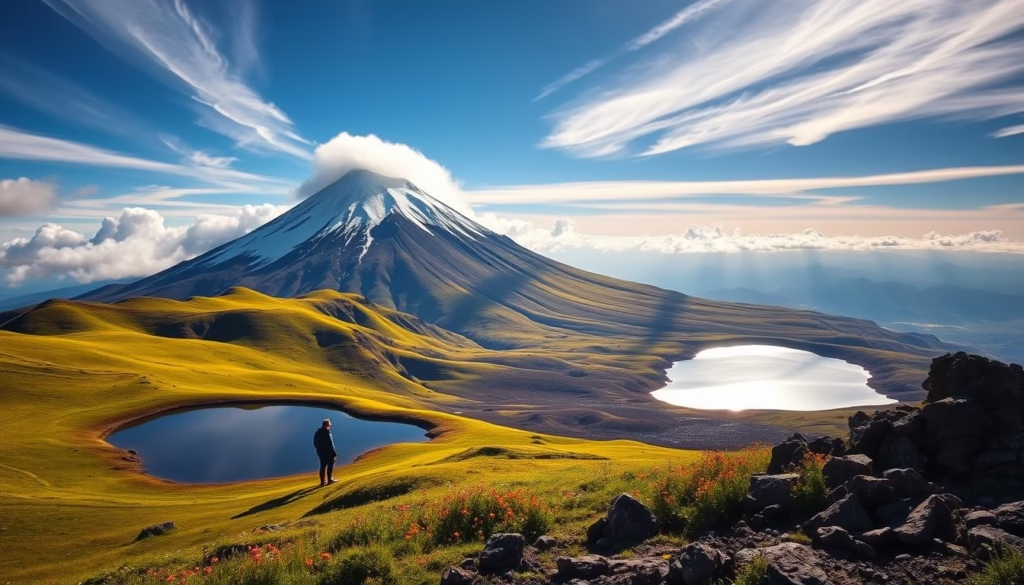
Trails for Every Adventurer
The Cotopaxi National Park serves up hiking routes ranging from gentle valley walks to challenging glacier approaches. Páramo grasslands bloom with cushion plants as you ascend, their springy texture softening each step. At higher elevations, crunching volcanic gravel underfoot signals your approach to the ice fields.
Local lodges like Secret Garden Cotopaxi transform novices into confident explorers. Their guides lead sunrise treks up Volcán Pasachoa, where sweeping views reveal neighboring peaks. For adrenaline seekers, mountain bikes let you descend through pine forests at thrilling speeds.
| Activity | Difficulty | Highlight |
|---|---|---|
| Glacier Hike | Challenging | Walk on ancient ice at 5,000m |
| Pasachoa Summit | Moderate | 360° volcano panoramas |
| Mountain Biking | Varied | 15km downhill through valleys |
| Horseback Riding | Easy | Ruminahui Mountain vistas |
Prefer slower-paced exploration? Ride sure-footed Andean horses across rolling foothills. These gentle excursions reveal hidden valleys where wild horses graze beneath the volcano’s watchful gaze. Every path in this national park promises postcard-worthy moments – just keep your camera ready.
Galápagos Islands – Nature’s Untouched Paradise
Few places on Earth spark wonder like the Galápagos Islands. This volcanic archipelago bursts with wildlife found nowhere else – marine iguanas sunning on lava rocks, blue-footed boobies diving into turquoise waters, and giant tortoises roaming misty highlands. Recognized as a UNESCO World Heritage Site, its pristine ecosystems remain 97% protected.
Wildlife Encounters and Marine Adventures
The islands’ isolation created unique species that inspired Darwin’s theory of evolution. Visit his namesake research station to see conservation efforts protecting iconic Galápagos tortoises. Sail between islands on expedition boats, where daily surprises might include penguins darting past your kayak or sea lions playfully circling your snorkel gear.
Beneath the waves, biodiversity explodes in Technicolor. Swim alongside green sea turtles gliding through coral gardens or spot hammerhead sharks patrolling deeper currents. Land adventures reward hikers with volcanic craters and scalesia forests teeming with Darwin’s finches.
Though visiting requires planning and budget, the payoff is unparalleled. Two-hour flights from Guayaquil deliver you to a living laboratory where nature writes the rules. Pack your sense of wonder – every moment here becomes a story worth retelling.

